The Weekly Anthropocene, April 9 2025
The great Global South solar boom, wild seas in the UK, cleantech for a free Ukraine, the amazing Torricelli Mountains of PNG, solar irrigation in Rwanda, tidal power in France, Just Egg, and more!
China, EU, Brazil, Pakistan, Saudi Arabia, & More
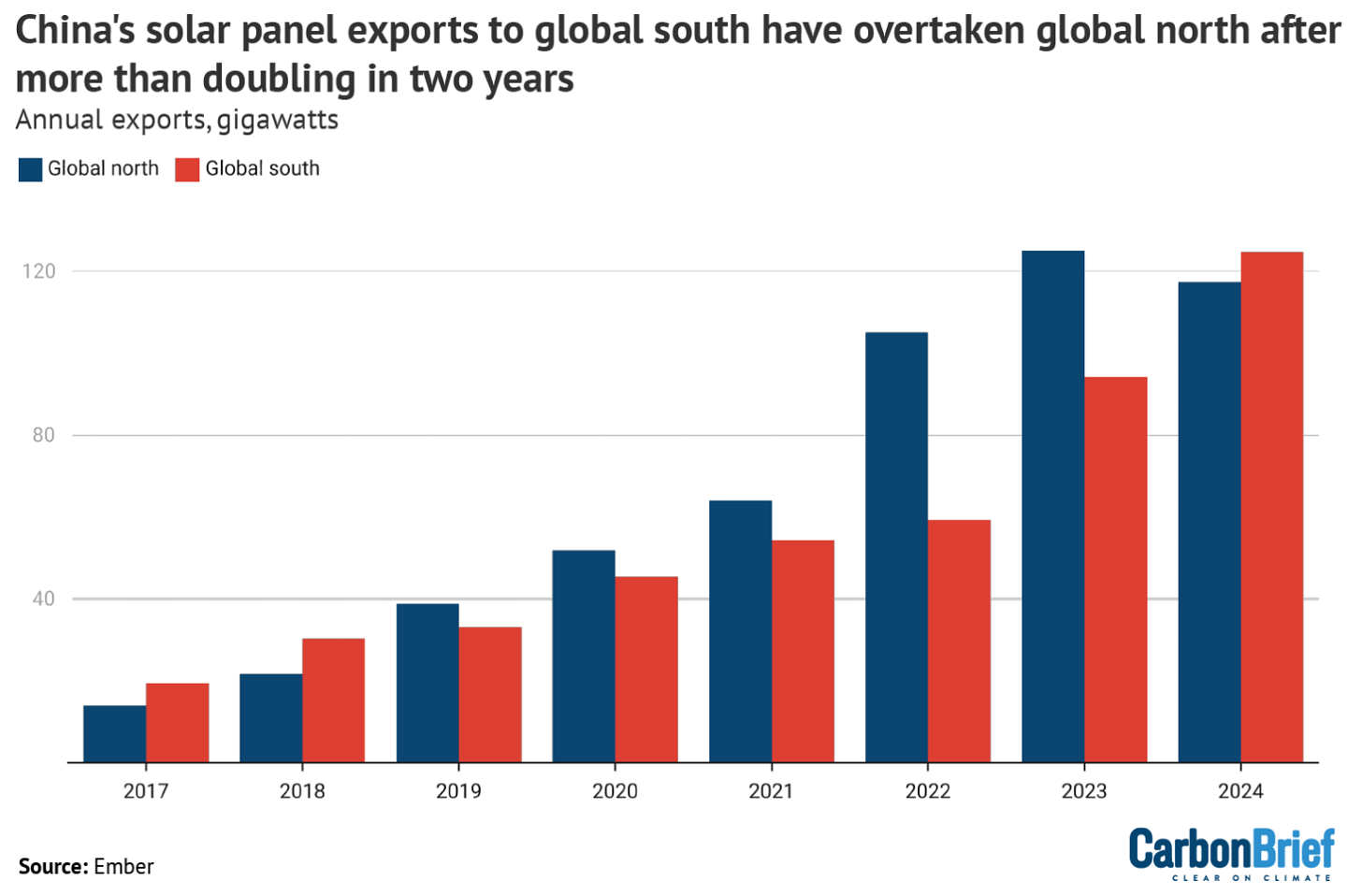
The unprecedented mass production of solar panels in China continues to transform human civilization’s energy systems faster than almost anyone thought possible. Now, it looks like China’s solar panel exports to developing countries (the “Global South”) overtook exports to developed countries (the “Global North”) in 2024 after more than doubling in just two years. A perfect example of the “leapfrog effect” in action and an extremely positive sign for Global South climate resilience and cleaner air worldwide!
The breakdown of solar exports by country is also worth examining in-depth. Number one is the Netherlands, which should be seen as essentially standing for all of the European Union as the Dutch port of Rotterdam is such a major regional import hub, but the following four were all Global South countries, led by Brazil in second place.

The third and fourth biggest importers of Chinese solar panels in 2024 were two countries enjoying very different surprise cleantech booms: Pakistan (mostly for small-scale rooftop solar in a decentralized cleantech revolution) and Saudi Arabia (mostly for vast new solar-and-battery farms in their deserts). The fifth was India, which like many other nations is working to build up its independent domestic solar manufacturing as well. Solar deployment is also starting to grow very fast from a very low base in Algeria, Iraq, and Nigeria - possible future candidates to wow the world with Pakistan-level super-fast solar surges!
And, after all this, China still installed 333 GW (333,000 MW) of solar panels domestically in 2024, substantially more than the total of 242 GW (242,000 MW) of solar panels that it exported in 2024 to the rest of Earth’s nations combined. Wow.
United Kingdom
An array of efforts to rewild a lost kelp forest off the coast of Sussex are succeeding magnificently. Trawling was banned in 2021, and a multitude of species have rebounded strikingly in the few years since, with mussel beds expanding and populations of lobsters, brown crabs, seahorses, angelsharks, mackerels, sand eels, and more all increasing. Great work!
Clean renewable energy provided 50.8% of all electricity generation across the United Kingdom in 2024, reaching more than half for the first time ever, while generation from fossil fuels fell by 16%. Adding in nuclear, low-carbon energy provided a record-high 65% of all UK electricity. An epic milestone! More recently, total solar deployment in the country crossed the 18 GW (18,000 MW) mark in February 2025, as the renewables revolution continues to progress. Superb!
The UK government has announced plans for a new national forest, with a target to plant 20 million trees and create 2,500 hectares of newly wooded land by 2050. This new Western Forest project will be a network and a mosaic, expanding and connecting existing patches of forest across a large area spanning several shires and reaching into cities like Bristol and Gloucester. Great work!
Ongoing research in the North Sea and other UK waters is providing more and more evidence that offshore wind farms can substantially benefit marine wildlife by acting as artificial reefs. Researchers have found that haddock are congregating around wind farms off Scotland, that older turbines attract more sea creatures over time, that lobsters off Wales like to hang out in the food and cover-rich areas around turbine foundations, and many more examples. A true win-win for the Anthropocene!
Ukraine
Norway has donated $5.5 million for a UNDP project to build 13 new solar installations (and some accompanying energy storage) at 8 hospitals and 5 schools across the city of Kharkiv in Ukraine. These 13 installations total 1.1 MW of electricity-generating capacity plus 2.3 MWh of battery storage, and will provide vital life-saving institutions with a clean, sovereign, decentralized source of power during their nation’s ongoing defense1 against the brutal Russian invasion. Kharkiv Municipal Clinical Hospital No. 8, which treats over 11,000 patients per year, has already received its solar installation, providing a stable power source to keep medical equipment running during blackouts. One more example from a wave of new technological innovations emerging in this awe-inspiringly heroic nation!
Papua New Guinea

New community-led research indicates that the Torricelli Mountains region of remote Papua New Guinea are a truly extraordinary biodiversity hotspot, home to two critically endangered tree kangaroo species that live nowhere else in the world among many other endemic biological jewels, many of them new to science!

A citizen science project that equipped 86 local women with mobile phones in 2024 has already found over 100 frog species, with many likely new to science and more yet to be found, while a botanist has identified over a dozen new plant species.
A recent study calculated that the Torricelli Mountains are among the 1% of land on the planet able to prevent the most extinctions in the next 100 years if they become a protected area. Furthermore, informal early calculations suggest that the Torricellis might be home to as much as 4% of Earth’s biodiversity on 0.003% of its land area!
The local Tenkile Conservation Alliance (TCA) community conservation group has already substantially reduced hunting in the region, are developing solar lighting and clean water projects in local villages, and have been pushing for a protected area since 2008 — but logging companies are increasingly making inroads into the mountains. There’s a very timely and extremely high-impact opportunity here for any donor or other funder looking to help preserve the diversity and richness of life on Earth!
Antarctica
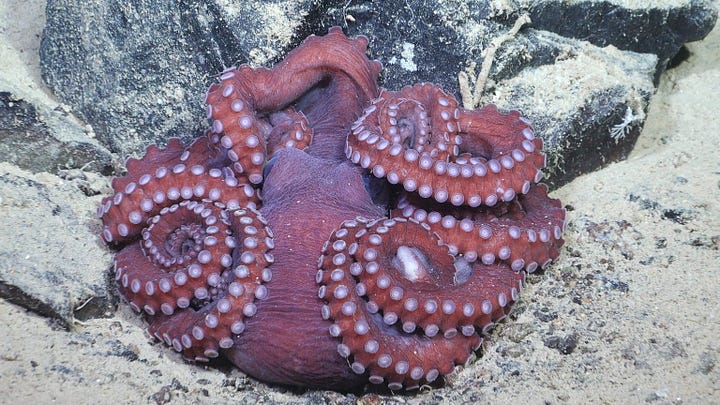
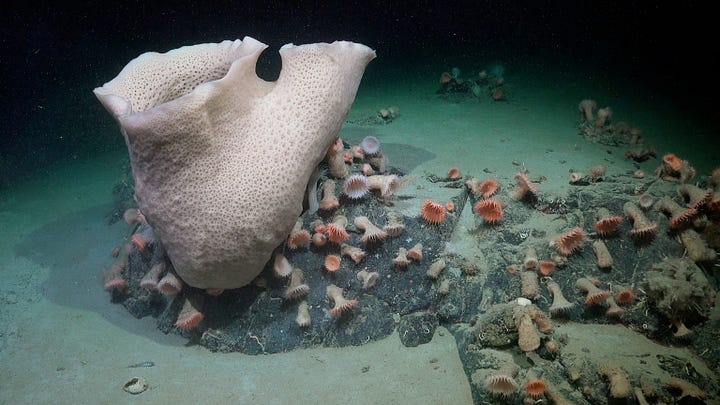

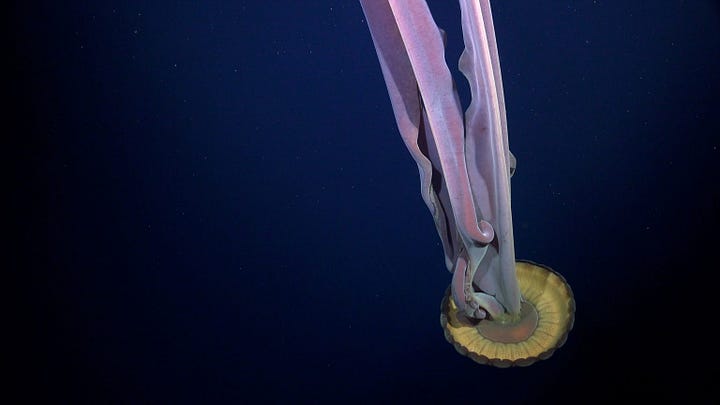
In January 2025, researchers from the Schmidt Ocean Institute happened to be nearby when the enormous 510 km2 A-84 iceberg calved off from the George VI Ice Shelf in Antarctica. They rushed to send undersea drones to explore the suddenly accessible seafloor, and were surprised to find a rich and thriving ecosystem in an area that until just then had been covered by ice 150 meters thick for hundreds of years. The area was home to fish, coral, octopuses, anemones, sponges, and more , including several new species of fish, crustaceans, and worms — all possibly fed by nutrients from deep-sea currents. Earth’s biosphere continues to astound us!

The new Bedmap3 map, recently released to the public and created thanks to an international team led by the British Antarctic Survey, integrates over six decades of survey data from dogsleds to satellites to form humanity’s most detailed look yet at Antarctica under the ice. The map shows that the Antarctic ice sheet is thicker than previously thought and that swathes of the continent’s land lie below sea level. Antarctic ice sheet melt is likely to be a centuries-long planetary management issue for humanity, and better information on what we have to work with is welcome!
Rwanda
Solar irrigation pumps are rapidly spreading across Rwanda, empowering smallholder farmers to counteract drought and precisely apply water to crops while eliminating the need for expensive, polluting diesel generators. 646 hectares of Rwandan farmland are already irrigated by clean, local solar power, and the government has set a target to raise that to 1,146 hectares by 2029. An epic “quiet revolution” of human development and climate resilience in the dawning Solar Age!
“Before using solar irrigation, I could only harvest 1 ton of vegetables per hectare.
After two seasons with solar irrigation, my yield of carrots and cabbages tripled to 3 tons per hectare.”
— Victor Ndwaniye, Rwandan smallholder
France
Four of the world’s most powerful underwater turbines are being built in the port of Cherbourg, set to be deployed to form the NH1 tidal power project three kilometers off the Cotentin peninsula of Normandy in France. The EU-funded project consists of four cutting-edge Proteus AR3000 turbines, each 3 MW for a total of 12 MW of clean electricity-generating capacity, and should be producing enough electricity for 15,000 local residents by 2028. The strong Channel current in the area, Raz Blanchard, could eventually support over 5 gigawatts (5,000 MW) of tidal power. Future EU tidal power projects aspire to deploy as many as 85 of these turbines each year. Furthermore, based on the offshore wind farm experience, NH1 is expected to likely support local marine life as a new “settlement space.” Long-gestating tidal power is starting to scale up a new baseload clean energy source! Spectacular work.
The great city of Paris has voted to further accelerate its world-leading urbanist revolution and pedestrianize an additional 500 streets across the capital. This will bring the total of car-free streets to 700 (over 10% of all streets in the city!) and eliminate an additional 10,000 parking spaces, clearing the way for human-scale spaces of nature, creativity, and play while reducing traffic dangers, air pollution and the urban heat island effect. Great work!
United States
Though horrific and disgusting imbeciles control the executive branch, people across America are still innovating, exploring, protecting, and fighting for a better world.
Lonnie Johnson, a prolific inventor and former NASA engineer with over 150 patents (perhaps best known for the Super Soaker toy)2, has launched the Johnson Energy Storage company and is setting up a pilot production line in Alabama to scale up production of their brand-new glass-electrolyte model of solid-state lithium battery. This bootstrapped “backyard” battery invention might just become a new breakthrough in energy storage! Spectacular work.
As U.S. egg prices continue to skyrocket (due largely to the current administration’s destructive bird flu and trade policies), sales of the vegan mung-bean based Just Egg product are five times higher than in 2024. Just Egg is now running a “Bird Flu Bailout” campaign selling their breakfast sandwiches at 50+ New York City bodegas!
One Altadena neighborhood devastated by the recent Los Angeles fires is working to rebuild together as a new community built with defensible buffer spaces and more fire-resistant density patterns — a potential model for peer-to-peer development.
The United States held several special elections on April 1, 2025, most notably for two open but strongly Republican-leaning Congressional districts in Florida and one hotly contested State Supreme Court seat in Wisconsin that essentially determines control of a court with substantial influence over elections in a key swing state. Highly encouragingly, all three resulted in substantial overperformances for the Democratic Party, with much narrower-than-expected Republican wins in deep-red Florida districts plus liberal Judge Susan Crawford winning by a resounding margin in Wisconsin - a state that voted Republican in the 2024 presidential election.
There’s still a chance to take America back from the corrupt and cruel cabal of degenerate moral monstrosities now in power, and to consign this shameful time in our history to be remembered as a vile and hideous interregnum. Let’s make it happen!
In 2024 Kharkiv experienced at least 318 missile, bomb, and drone attacks by Russian forces against civilian infrastructure. They still stand strong and free.






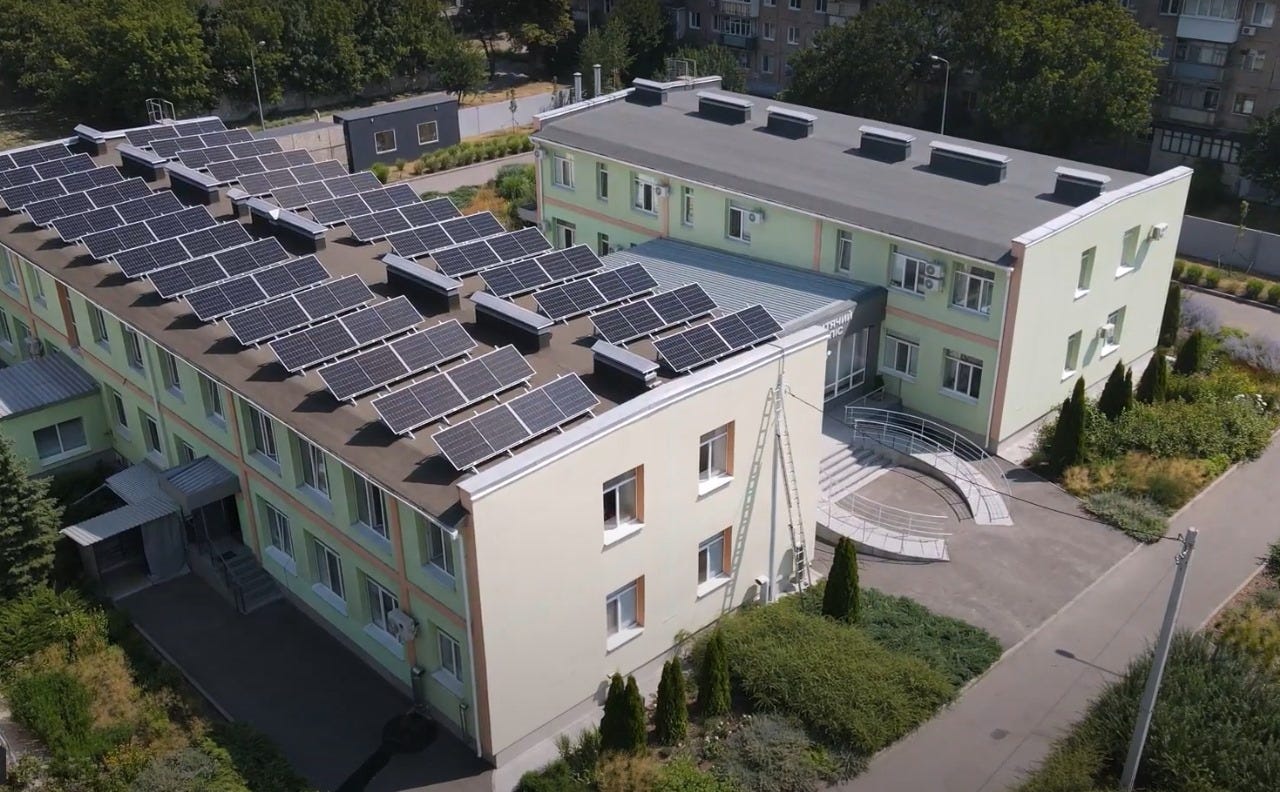

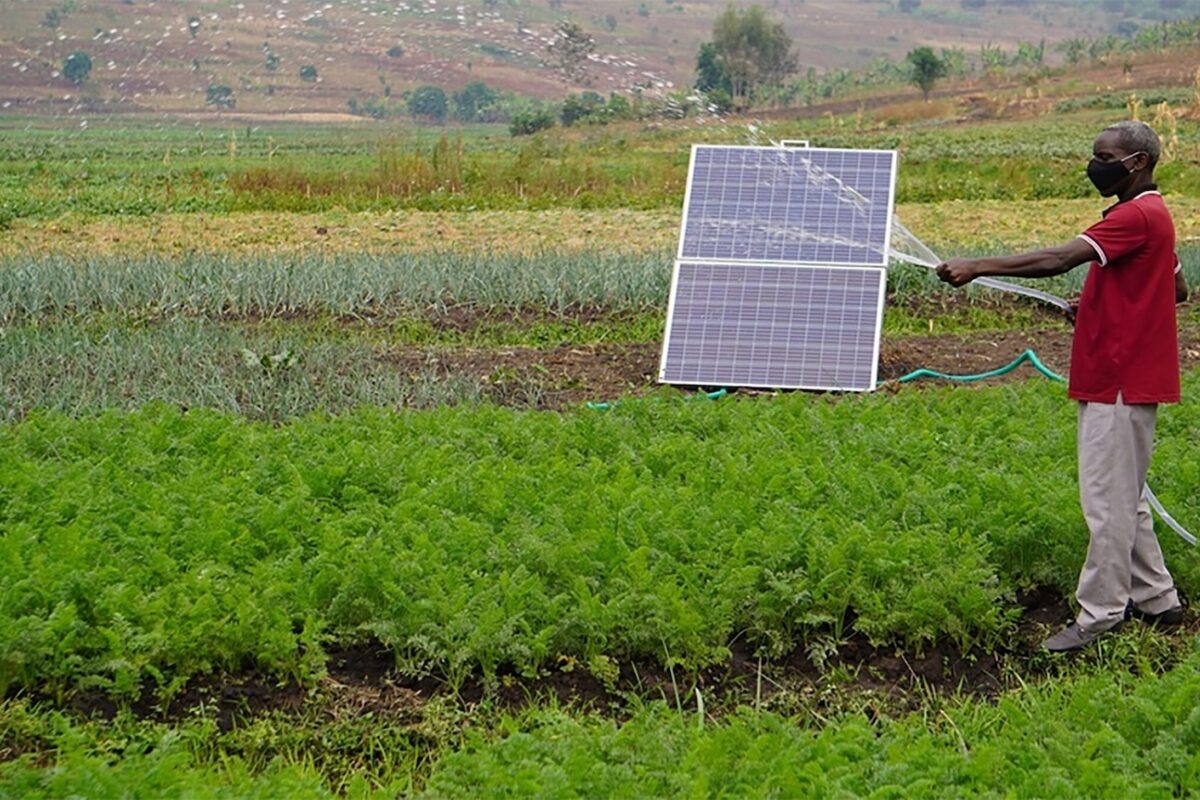




“The Weekly Anthropocene” now joins Bill McKibben’s “The Crucial Years” as reliable sources of uplifting environmental and climate news at a time when such inputs are increasingly difficult to find. Thank you!
I agree with Jonathan!